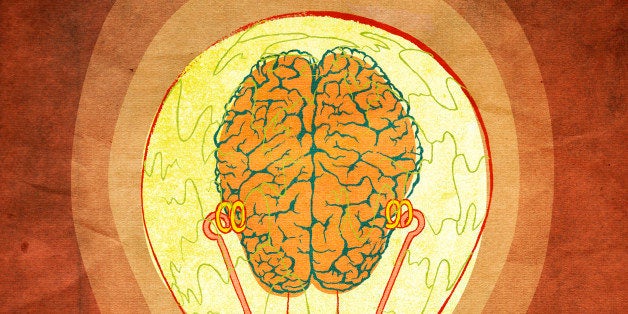
Sleep amps up brainwaves that play a role in visual learning, a new study suggests.
Brown University researchers asked study participants to complete a visual task where they had to identify diagonal lines and a caret (which looks like a wedge) among a sea of horizontal lines. They completed this task before and after sleep. They also measured the participants' brainwaves before and after they did the visual task. Brainwaves were measured with a number of imaging technologies, including magnetic and electronic encephalography, magnetic resonance imaging and polysomnography.

Photo Credit: Watanabe lab/Brown University
Sigma brainwave power increased after the study participants had slept, compared with before, researchers found. Brainwaves have been identified in past research to play a role in learning consolidation in certain brain regions, including motor learning.
In addition, the researchers confirmed that this increase in brainwave power was linked with learning the visual task by purposely putting elements of the visual learning task in a certain part of the participants' field of vision. This part of the field of vision is linked with a specific part of the visual cortical area in the brain.
Researchers were then able to measure the brainwave power in this specific part of the visual cortical area. They found that sigma brainwave power was higher in this exact part of the visual cortical area, than other parts.
The findings were presented at the annual meeting of the Society for Neuroscience.
